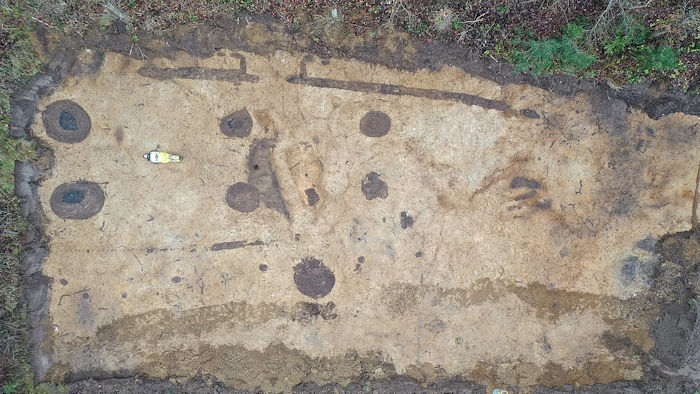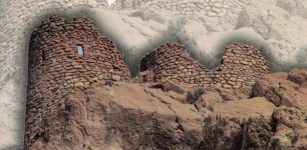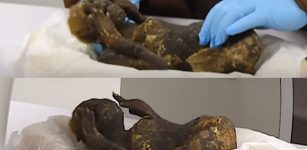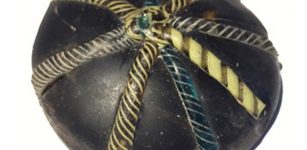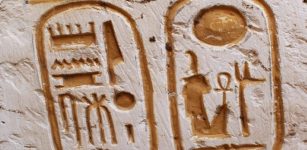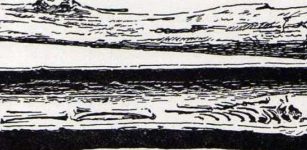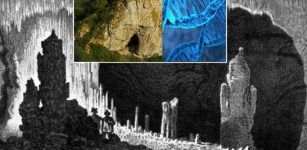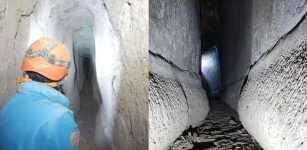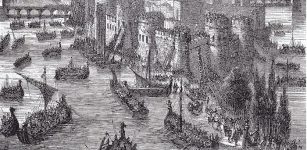Huge Viking Hall From Harald Bluetooth’s Time Discovered In North Jutland
Jan Bartek - AncientPages.com - Archaeologists in Denmark report they have made an incredible Viking Age find, the biggest in the recent ten years.
A huge Viking hall dating back to the time of Harald Bluetooth has been discovered in North Jutland. The discovery was made accidentally when archaeologists from Nordjyske Museer investigated the ground where a detached house was built.
To come across Viking-related ruins was a surprise to scientists.
Archaeologists are eager to continue their investigation of a grat Viking Hall found in North Jutland. Credit: North Jutland Museums
"We didn't expect anything like this to be in the area. This is the largest Viking Age find of this nature in more than ten years, and we have not seen anything like it before here in North Jutland, even though it has only been partially excavated," excavation manager and archaeologist Thomas Rune Knudsen said.
"The post holes are so large that many archaeologists would hardly think at first glance that it could really be such a massive construction. It was only when the third hole in a row appeared that I was convinced that I was standing in front of something extraordinary," Knudsen added.
Credit: It was a Viking place where important decisions were made. North Jutland Museums
So far, scientists have determined the hall in Hune was a prestigious building during the Viking Age. It was probably a gathering place for political meetings and large Viking guilds and, therefore, not an ordinary residence.
"It has most likely been an important stage in the political game. Especially for North Jutland. The local elite has been able to meet with the burgeoning royal power on the spot. The political elite met in the hall and made agreements. This was a vital meeting point where the future of North Jutland and Denmark has been shaped, " Knudsen said.
The design at Hune is reminiscent of the houses found at Harald Bluetooth's ring castles, which include Fyrkat at Hobro and Aggersborg at Aggersund.
For this reason, among other things, the hall can tentatively be dated to the late Viking Age - the last half of the 9th century or the very first part of the 11th century.
Female Viking
Archaeologists are still excavating at the site, but they think they know who the great hall belonged to. Vital clues come from a rune stone found near Hune, which can be dated to precisely this period. The one-and-a-half meter high stone bears the text: "Hove, Thorkild, Thorbjørn set their father Runulv den Rådsnilde's stone." It is dated 970-1020.
The stone's original location is unknown but it originates from the local area. The stone's dating has led the archaeologists on the trail, and according to archaeologist Thomas Rune Knudsen, it is 'really interesting in this context'.
"It is difficult to prove that the found Viking hall belonged to the family of Runulv den Rådsnilde, but it is certainly a possibility. If nothing else, the runestone and hall represent the same social class, and both belong to society's elite.
And precisely dating is one of the most exciting aspects of the work with the excavation.
The most exciting thing will be learning more about the hall's exact dating. In what era was it? Who was the builder? What does the new find mean for our understanding of the Blokhus area in the Viking Age," Knudsen asks.
It has only been possible to excavate part of the hall. Still, there are probably several houses hidden under the mound to the east because a hall building of this nature rarely stands alone, says the archaeologist adding it will also be exciting to find out if there is more in Blokhus.
The discovery is fascinating, and Knudsen says it's like finding a crucial piece in a puzzle. Suddenly, many things fall into place about North Jutland in the late Viking Age.
See also: More Archaeology News
According to the plan, excavation will resume after the New Year if the weather permits. The excavation will then take a few weeks. After the excavation is finished, the area will be covered again, and the client can proceed with his construction as planned.
A carbon-14 dating of the find will also be carried out so that the hall can be dated more accurately. These results are expected to be available at the end of 2023.
Written by Jan Bartek - AncientPages.com Staff Writer

